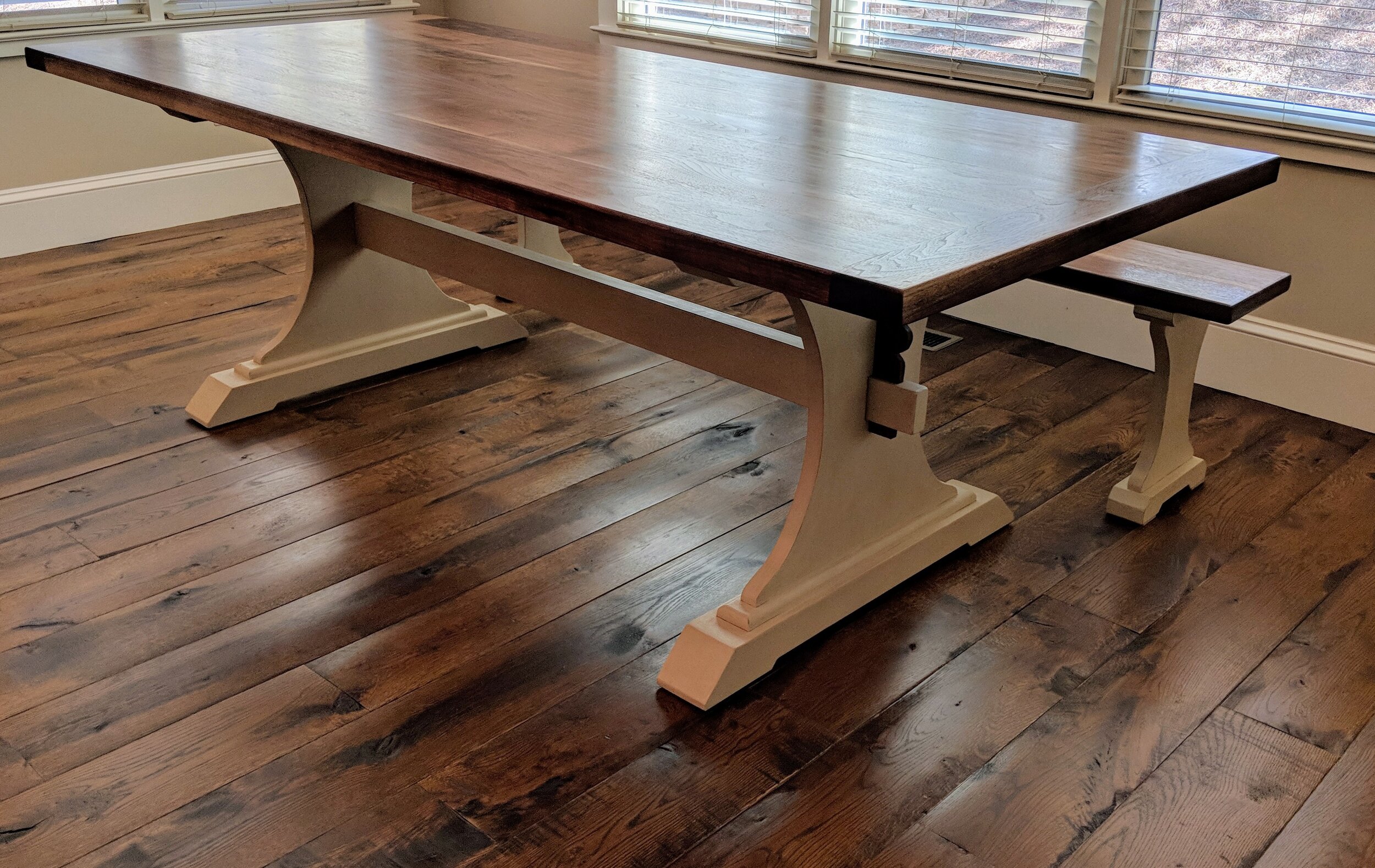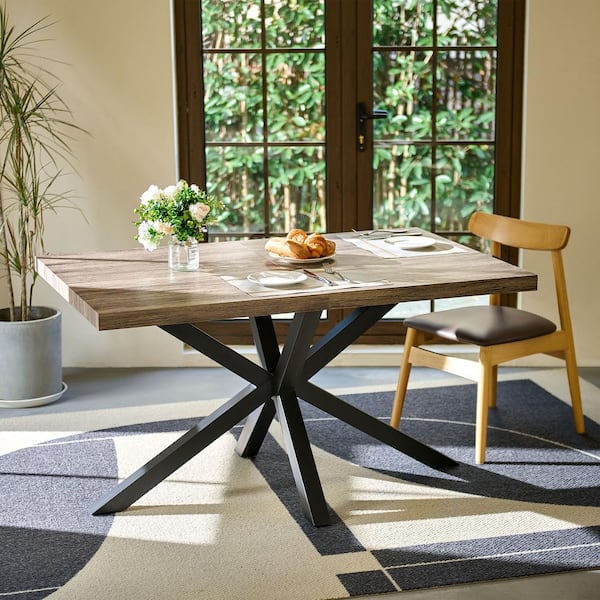Upgrade Your Table's Appearance with Decorative Dining Table Legs Wood Designs
Upgrade Your Table's Appearance with Decorative Dining Table Legs Wood Designs
Blog Article
Exploring the Various Sorts Of Table Legs Wood for Your Eating Space
The choice of table legs wood can greatly affect both the aesthetic and useful high qualities of your dining area. Strong wood alternatives, such as oak and walnut, supply a classic appearance with unrivaled resilience, while crafted wood choices provide cutting-edge designs that simulate the richness of all-natural grains. Additionally, the expanding trend of recovered timber introduces a lasting element that appeals to eco mindful customers. As we discover these various options, it comes to be necessary to think about not just the aesthetic charm yet also the functional effects of each material option. What variables should direct your choice?
Strong Timber Options

Additionally, strong timber is renowned for its stamina and longevity. Unlike crafted products, solid timber is much less susceptible to bending and damage in time when properly kept. This makes it an optimal selection for families or those that frequently hold gatherings. Each piece of solid wood is distinct, showcasing private attributes that include in the beauty and character of the eating table.
Furthermore, strong timber can be finished in many methods, varying from all-natural oils to tarnished coatings, enabling home owners to individualize their furnishings to match their decoration. In recap, choosing solid timber for eating table legs not only makes sure structural honesty yet additionally improves the aesthetic allure of the eating area, making it a rewarding investment for any kind of home.
Engineered Wood Alternatives

Plywood, built from multiple layers of wood veneer, is especially solid and stable, making it a superb selection for eating table legs. Its layered composition enables it to stand up to modifications in humidity and temperature much better than typical solid wood. MDF, on the other hand, provides a smooth surface area for paint or veneering, allowing developers to accomplish a polished appearance while preserving architectural honesty.
When choosing crafted timber choices, it is essential to think about the designated usage and wanted visual. These products not just boost the capability of eating rooms yet additionally permit for better design flexibility, ensuring that conventional and contemporary styles can exist side-by-side sympathetically.
Reclaimed Timber Includes
Redeemed timber uses a special blend of sustainability and character, making it a progressively preferred option for eating table legs. Sourced from old barns, manufacturing facilities, and various other structures, recovered wood embodies a background that brand-new products simply can not replicate. Each item lugs its very own story, noted by distinctive flaws, knots, and varying grain patterns, which contribute to a table's unique visual allure.
In enhancement to its visual charm, redeemed timber is an eco-friendly alternative. By repurposing formerly used products, it minimizes the demand for new lumber, hence aiding to save forests and decrease waste. This aligns with an expanding consumer choice for lasting practices in furniture.
Furthermore, redeemed wood is frequently much more sturdy than newly gathered wood because of its age. The all-natural drying out procedure that redeemed timber undertakes lead to a denser and stronger material, making it much less vulnerable to bending and splitting. This improves the longevity of dining tables, permitting them to stand up to the rigors of everyday usage.
Softwood vs. Hardwood
When picking table legs, recognizing the differences in between softwood and wood is important for achieving both functional and visual objectives. Softwoods, derived from coniferous trees, such as want and cedar, are characterized by their lighter weight and simplicity of adjustment. They usually show a more rustic look, making them ideal for country-style or laid-back eating rooms. However, softwoods are normally much less durable than hardwoods, which can be a factor to consider for households or those looking for long life in their furnishings.
On the various other hand, hardwoods, sourced from deciduous trees like oak, maple, and cherry, are renowned for their density, strength, and sturdiness. The complex grain patterns and abundant colors of woods supply a ageless and advanced appeal, making them perfect for formal eating setups. While woods have a tendency to be a lot more costly and heavier, their resilience versus damage commonly validates the investment.
Ultimately, the option in between softwood and wood for dining table legs should straighten with your layout vision, usage needs, and spending plan, making sure that your dining area reflects your individual style while remaining useful gradually.

Therapies and coatings
The aesthetic charm and durability of table legs can be considerably this contact form improved through various finishes and therapies. These procedures not just secure the wood from damage but additionally boost its look, enabling it to match diverse indoor designs.
One typical treatment is staining, which passes through the timber and enhances its natural grain while including shade. Spots offer an abundant, elegant look, enabling property owners to match their furnishings with existing decoration. On the other hand, clear surfaces such as polyurethane or varnish produce a protective layer without changing the timber's initial hue, making sure sturdiness against wear and tear.
Furthermore, all-natural oils, like tung or linseed oil, nurture the timber and offer a refined sheen, all while being green. useful reference These oils allow the surface area to take a breath, preventing moisture accumulation and prospective bending.
For those looking for a rustic charm, troubled or weather-beaten coatings can be used to produce an aged appearance, adding personality to the item. Inevitably, the option of surfaces and therapies depends upon personal preference, wanted visual appeals, and the specific wood type, making it necessary to take into consideration these variables when choosing dining table legs for your area.
Final Thought
Strong timbers, crafted options, and redeemed options each deal distinct advantages, providing to numerous choices and demands. Inevitably, the selection of timber kind need to align with desired style, sturdiness, and ecological factors to consider, boosting the total eating experience.
The selection of eating table legs timber can greatly influence both the useful and visual top qualities of your eating area - Dining Table Legs Wood. Solid wood choices, such as oak and walnut, offer a classic look with unmatched resilience, while engineered wood options provide innovative designs that imitate the richness of natural try this web-site grains. Strong wood provides a timeless top quality that can boost the overall layout of a dining room. Each piece of solid wood is special, showcasing specific qualities that include to the appeal and character of the eating table
In addition, reclaimed timber is usually extra sturdy than recently collected wood due to its age.
Report this page